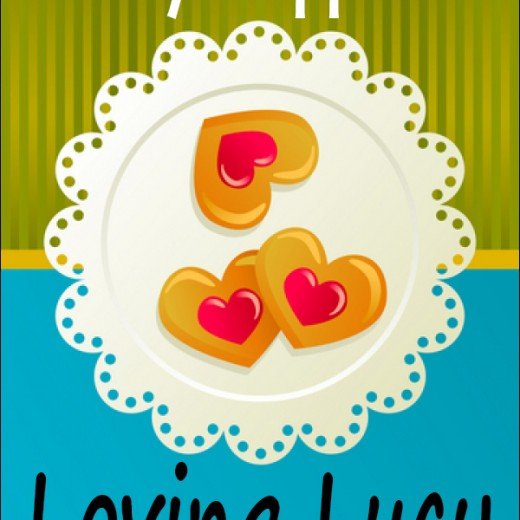Tag the Trait: The Game of Character Description by Wyatt Bessing
 Welcome back to monthly columnist, Wyatt Bessing. A writing coach and teacher, author, Wyatt Bessing shares his fun take on games, play, and how they help our writing. This month Wyatt makes a game out of character description. Enjoy!
Welcome back to monthly columnist, Wyatt Bessing. A writing coach and teacher, author, Wyatt Bessing shares his fun take on games, play, and how they help our writing. This month Wyatt makes a game out of character description. Enjoy!
***
How do you bring your characters to life? Why not take a lesson from Jack London, whose short story “To Build a Fire” has been a classic of middle school literature for… well, just about forever? This was perhaps the story that first inspired me to become a writer. I could truly imagine its determined, rugged, yet not too bright protagonist in his journey across the sub-zero tundra. I still vividly remember seeing how the spittle from his red tobacco froze and solidified into his beard, how he stumbled through half-frozen lakes and crashed through the ice with his sled dogs.
That story has adventure, life-threatening danger, and – most importantly – an unforgettable character. To hook your readers, you’ll need a protagonist with a distinct voice, believable traits, and striking details. I first read about traits and tags in Dwight V. Swain’s wonderful book Creating Characters. He describes tags as “a limited, specialized label” having to do with appearance, speech, mannerism, ability, and attitude. They are a way for the reader to identify and envision the character. Traits, then, are “habitual modes of response and patterns of behavior “ When a character comes into a difficult situation, how will he respond?
This game is a fun way to create these character elements.
First, find two dice. The regular six-sided kind will work. You’re going to roll those dice and add the numbers together. This is the number of traits you’re going to be working with. I roll a 5 and a 3. 5 + 3 = 8 traits. I imagine my character Wade from my supernatural YA work-in-progress, Korbin’s Keeper. What are eight of his defining traits?
Next, determine the traits you’ll develop. Use the number of traits you rolled. Jot down names for these traits. Create at least an equal number of external (appearance) and internal (personality) traits, or more personality traits, if possible. To write your appearance traits, Imagine how other characters view the protagonist or how he/she would perform athletically.
For personality traits, imagine your character in a conflict. How does he/she face it or avoid it? Your traits will to a great degree depend upon your story and its central conflict. In my work-in-progress, a boy who just wants to be normal discovers that he has the unusual ability to summon his inner spirit from his writing. So, I want to choose character traits that will be challenged during the story. He is a conformist by nature, wanting to please his friends, parents, and teachers; yet the evil-fighting spirit within him keeps getting him into trouble. So, I decide that I want to describe him as smart and creative, yet wanting to be nice and safe.
Don’t neglect character development throughout your story. For example, in Hamlet, the dark prince whose indecisiveness and over-thinking causes him inner turmoil throughout the play, finally decides in Act IV to act decisively and avenge his father’s death, thus putting into motion the drama’s tragic conclusion. My creative, lonely character is always seeking community, so he will attempt to make himself conform to the standards of his new friends. But will their standards live up to his own? Perhaps his character will develop from lonely to self-contained and secure as he realizes he doesn’t need others in order to be happy. You will need tags for each stage of a character’s development; show the reader how he or she is different now that the change has occurred.
A warning: Try to avoid obvious trait pairs, such as “the awkward loner” or “the gregarious storyteller.” Why not have a nerdy athlete or a clumsy warrior?
Finally, beneath each trait (physical and personality) write three tags illustrating these traits. The tags will put those traits into action, showing your readers (rather than telling them) about this character.
Wade’s traits and tags:
Storyteller
- invents story of sailors and treasure
- friends fall silent as they listen
- treehouse setup for acting out his tales
Awkward
- kids tease him
- rather read than play sports
- falls down the hill
Lonely
- invents an imaginary friend
- listens at the door to hear sister’s friends
- waits in his hiding place in case anyone comes to visit
Creative
- imagines aliens talking to him
- calls the pepper tree “The Ogre”
- writes in his journal
Tall/Gangly
- his tall, strong ghost is a “photo negative of him”
- his friends call him Weed
- feels that he might blow over in the wind
Caring
- jumps out of tree to save friends
- sorry for teasing sister
- visits sister in hospital
Mischievous
- Big Foot prank
- Truth or Dare
- steals sister’s clothes
Blonde
- like a wild cotton swab
- photo negative to ghost’s black hair
- glows under the moonlight
***
 Wyatt Bessing is a writer, writing coach, and learning specialist. His stories and essays have appeared in Bedtime-Story.com, Outsider Ink, national educational assessment materials, and in the anthology Dance, Human Rights, and Social Justice. Through his workshops, website, and blog at wyattgbessing.com, he guides new and experienced writers in crafting more effective, expressive, and striking work. During the day, he works at Star Academy in San Rafael, teaching reading and comprehension skills to students with learning differences in elementary through high school. He lives in Santa Rosa, CA with his wonderful fiance and co-creator, Sarah Laugtug.
Wyatt Bessing is a writer, writing coach, and learning specialist. His stories and essays have appeared in Bedtime-Story.com, Outsider Ink, national educational assessment materials, and in the anthology Dance, Human Rights, and Social Justice. Through his workshops, website, and blog at wyattgbessing.com, he guides new and experienced writers in crafting more effective, expressive, and striking work. During the day, he works at Star Academy in San Rafael, teaching reading and comprehension skills to students with learning differences in elementary through high school. He lives in Santa Rosa, CA with his wonderful fiance and co-creator, Sarah Laugtug.







I know this may sound like a dumb question, but is there a site or a book that describes personality traits? When I write under a certain genre type, I have no problem making quirky characters, but when I write romance, my characters are bland. Thanks.
Great question, Carol! The book Creating Characters by Dwight Swain is my favorite for this, but I think my favorite source of character is real life. I imagine a friend (or foe!) in my real life. What does my friend do to show traits like generosity or selflessness? How does that person I’m not so fond of make me uncomfortable? Some of this might come in back story or flashback to round out your characters.